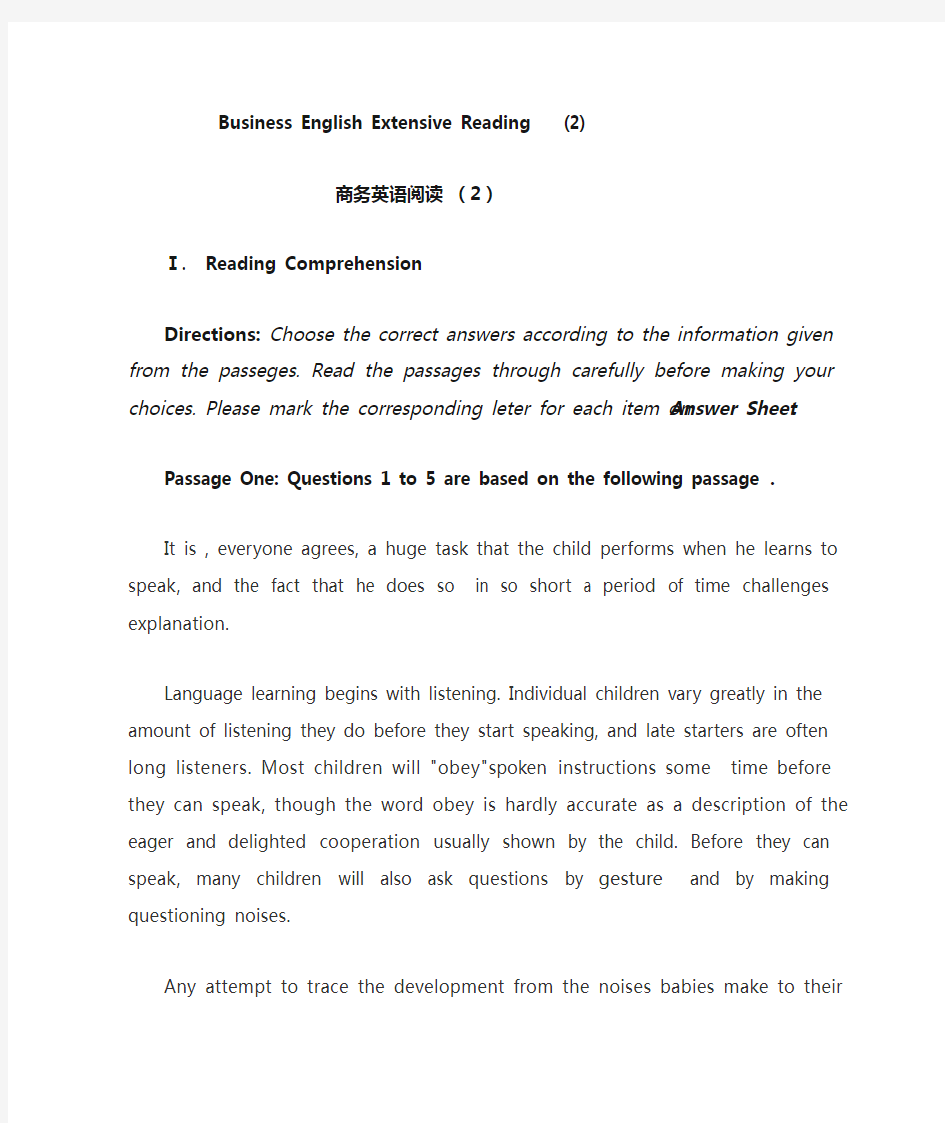商务英语阅读2-2

- 1、下载文档前请自行甄别文档内容的完整性,平台不提供额外的编辑、内容补充、找答案等附加服务。
- 2、"仅部分预览"的文档,不可在线预览部分如存在完整性等问题,可反馈申请退款(可完整预览的文档不适用该条件!)。
- 3、如文档侵犯您的权益,请联系客服反馈,我们会尽快为您处理(人工客服工作时间:9:00-18:30)。
Business English Extensive Reading (2)
商务英语阅读(2)
Ⅰ. Reading Comprehension
Directions: Choose the correct answers according to the information given from the passeges. Read the passages through carefully before making your choices. Please mark the corresponding leter for each item on Answer Sheet.
Passage One: Questions 1 to 5 are based on the following passage.
It is , everyone agrees, a huge task that the child performs when he learns to speak, and the fact that he does so in so short a period of time challenges explanation.
Language learning begins with listening. Individual children vary greatly in the amount of listening they do before they start speaking, and late starters are often long listeners. Most children will "obey" spoken instructions some time before they can speak, though the word obey is hardly accurate as a description of the eager and delighted cooperation usually shown by the child. Before they can speak, many children will also ask questions by gesture and by making questioning noises.
Any attempt to trace the development from the noises babies make to their first spoken words leads to considerable difficulties. It is agreed that they enjoy making noises, and that during the first few months one or two noises sort themselves out as particularly indicative of delight, distress, sociability, and so on . But since these cannot be said to show the baby's intention to communicate, they can hardly be regarded as early forms of language.It is agreed, too, that from about three months they play with sounds for enjoyment, and that by six months they are able to add new sounds to their repertoire This self-imitation leads on to deliberate imitation of sounds made or words spoken to them by other people. The problem then arises as to the point at which one can say that these imitations can be considered as speech.
1.By "....challenges explanation" (Line 2, Para.1) the author means that ______.
A)no explanation is necessary for such an obvious phenomenon
B)no explanation has been made up to now
C)it's no easy job to provide an adequate explanation
D)it's high time that an explanation was provided
2. The third paragraph is mainly about _________
A)the development of babies' early forms of language
B)the difficulties of babies in learning to speak
C)babies' strong desire to communicate
D)babies' intention to communicate
3. The author's purpose in writing the second paragraph is to show that children _______.
A)usually obey without asking questions
B)are passive the process of learning to speak
